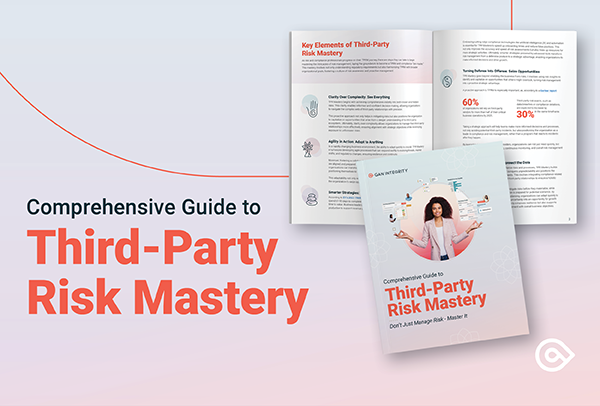Establishing an effective global compliance program requires not only adapting to different legal frameworks but also a myriad of cultural contexts. One area of compliance that is especially susceptible to cultural variations around the world is gifts & entertainment (G&E) practices. Due to these nuances, capturing accurate gifts and entertainment data is paramount.
G&E expenses can be defined as legitimate expenses that function to build relationships or express appreciation. While gift-giving can be deeply embedded in some cultures as a legitimate means of trust-building, these practices pose a significant compliance risk for companies that have to respond to anti-corruption laws that pose a de minimis threshold on the value that G&E expenses can have across organizations.

Read Now - Download the Guide
As a consequence, when implementing G&E compliance procedures, compliance officers are faced with the challenge of analyzing the right metrics to reflect different G&E-related risks across various geographies, regions, currencies, and cultures. While companies can leverage technology solutions to ease the process of managing G&E compliance, ensuring that all risks are mitigated ultimately requires data-backed analysis.
So, which metrics and data should compliance officers leverage to analyze risk in their G&E compliance activities? Here are some of the key metrics that compliance teams should look at when deploying a global G&E compliance program:
Tracking Government Interactions
Requests Involving Public Officials
Interactions with public officials pose high compliance risks and should be top of mind as different countries pose different limits on the monetary value of presents to public officials. In most compliance programs, gifts to public officials are always subject to a manager's approval. While some of these gifts can be legal, tracking the number of requests involving public officials can be a telling data point to reveal potential corruption patterns over time. Having data on the number of gifts given to an official can be essential, as compliance gift declaration thresholds can easily be overcome by providing multiple small gifts. Gathering this information can be even more critical if you work in a highly regulated industry or one being contracted by governments and engaging in public bids.
Geographical Breakdown of Requests Involving Public Officials
As global corruption survey data from the World Bank and Transparency International indicates, in many jurisdictions, it is expected that organizations give gifts during their dealings with government officials. In an enforcement action in September 2020, packaging company Pactiv Evergreen Inc disclosed FCPA violations in China in a filing with the U.S. Securities Exchange Commission (SEC) as an internal investigation found that employees occasionally provided Chinese public officials with gift cards. While the company affirmed the gift cards were of 'relatively minor value', and these gifts might have even been legal under Chinese law, this proves the importance of keeping track of this information, especially when it concerns complying with extra-jurisdictional anti-bribery laws like the FCPA and multiple legal frameworks.

Approval Process Insights
Total Requests Created Over Time
Analyzing the total amount of requests over a period of time can provide useful insights around seasonal changes or special occasions such as Christmas or Chinese New Year. During these times, peaks can be an impetus for compliance officers to remind employees of the company's policy to prevent risks. Also, the total amount of G&E requests over a period of time can help shed light on the overall effectiveness of the implementation of your G&E policy. If you are seeing a sizable decrease in requests submitted compared to the same time period the year prior, it is worth exploring what this means. Are fewer gifts actually being given or are fewer employees following the process? Understanding your organization's internal benchmarks can be very telling.
Approved vs. Rejected Requests
Having an overview of the percentage breakdown of requests that have been approved or rejected across the organization can give a pulse of the general understanding of G&E within your organization. While employees might only be required to report G&E transactions that fall over a particular threshold, a high percentage of rejected requests might mean that while employees are still complying with request submission requirements, it might be that the compliance department should evaluate the efficiency of the training program or revisit the company policy on gifts. If this is the case, retraining certain groups could be valuable.
Amount of Cross-Organizational Transactions
Taking into consideration the importance of aggregate metrics, having a look at the total number of gifts your organization has provided to another entity can be useful as a means to evaluate potential risks and get the pulse of G&E practices across your company. As a compliance officer implementing a new G&E compliance program, you want to know who your employees are spending the company's dollars on. This can be captured by looking at the total amount of gifts given to the same entity outside of the organization. For example, in 2019 the U.S. Securities and Exchange Commission (SEC) imposed a civil fine on Telefonica Brasil of USD 4.13M for providing football tickets to 147 public officials. In this case, while sports tickets might have seemed like low-risk transactions, the aggregate number should have raised red flags in terms of compliance. These types of insights can help you understand the practices in your organization and understand where to set your thresholds when you are freshly deploying a G&E framework.
Requests Across Departments, Seniorities, & Geographies
Analyzing request data by department, seniority, or geography can provide insights into issues involving seniority levels or cultural differences. In one recent case, the former CEO of Australia Post was forced to resign after Australian authorities found that an internal company gift of Cartier watches worth USD 20,000 as executive bonuses were inappropriate. Even though the former executive stated that the watches had been approved by the former chairman of the board, this shows the importance of not only having appropriate G&E policies for this type of situation (which would have likely qualified as high-risk), but also for monitoring of red flags across different departments, managers, or seniority levels to know where to focus during training.
Frequency of Approved Requests by Employee
In addition to having gifts and entertainment data on the amount of requests across departments or other units, it can also be useful to look at the number of approved requests by individual employees and the frequency with which approvals happen. While several transactions might have been approved, if a particular employee is conducting multiple 'low risk' transactions frequently under similar circumstances, this might be an indicator of potential corruption. Therefore, keeping track of how many requests are approved for individual employees, as well as time intervals between these requests is advisable.
Number of Exception Requests
Exception requests are often also included in a company's gifts & entertainment policies. Keeping track of these instances is essential as these transactions might be high-risk. Aggregate numbers of exception requests (and approvals) might indicate a relaxed attitude towards the company's G&E policy or an overall misalignment between the compliance department's perception of G&E and employees' perception. Considering that exceptions are subject to approval based on a context basis, if regulators ever come knocking at your door, having documentation of these instances is highly recommended.
Value of Gifts Offered & Received Across Geographies
Looking at the total value of gifts offered and received broken down by different geographies can be a powerful data point to determine high-risk locations. If your G&E process includes declarations and approval thresholds, it can be relevant to analyze the differences between the average value of approved gifts across geographies. Be sure to take into account purchasing power differences, currency conversions, and cultural differences which can significantly impact these averages. Analyzing this data can help you identify and allocate resources to geographies that might need additional training.
Reporting On Gifts and Entertainment Data
Getting access to this compliance data can have a big impact on your compliance team's ability to manage risks, however, it would be difficult (if not impossible) to measure all these factors on an ongoing, real-time basis without the support of a solution. To tackle the challenge of assembling analytics and KPIs, we developed GANalytics, a fully configurable reporting and analytics solution that helps you track all critical information, including critical gifts & entertainment data, to keep your compliance program in check.
GANalytics serves your program with the insights you need on your gifts & entertainment process to make informed and data-driven decisions, for you to focus on what matters the most. With our customizable dashboards, you can not only measure the overall impact and performance of your gifts & entertainment process but also drill down to granular analytics based on specific geographies or involvement with public officials to effectively manage risks.

GANalytics includes robust reports and dashboards for our Gifts & Entertainment, Investigations, Conflicts of Interest, and Risk Management processes as well as any custom compliance process our customers need. To learn more about GANalytics and our Gifts & Entertainment solution and how it can be implemented in your compliance program, book a demo to get in touch with one of our compliance experts for a customized platform walkthrough.

